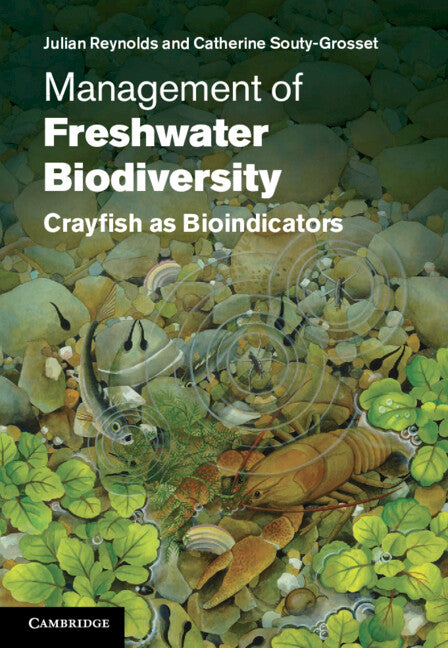Freshly Printed - allow 6 days lead
Couldn't load pickup availability
Management of Freshwater Biodiversity
Crayfish as Bioindicators
Offers a global perspective on freshwater systems, highlighting how the conservation of crayfish will help protect ecosystem quality.
Julian Reynolds (Author), Catherine Souty-Grosset (Author)
9780521514002, Cambridge University Press
Hardback, published 10 November 2011
384 pages, 30 b/w illus. 16 colour illus. 29 tables
25.4 x 18.1 x 2.3 cm, 0.94 kg
"Indeed, this is one of the best crayfish-oriented books this reviewer has ever read. While the book will appeal most to crayfish enthusiasts, it actually has a much broader value; anyone interested in managing aquatic species in general should find the book's lessons quite valuable. This reviewer had originally planned to give this book away after reviewing it, but now it occupies a valued space on his bookshelf. Highly recommended."
J.H. Thorp III, University of Kansas for Choice Magazine
Integrating research into freshwater biodiversity and the role of keystone species, this fascinating book presents freshwater crayfish as representatives of human-exacerbated threats to biodiversity and conservation. It uses examples from these and other large decapod invertebrates to explore how communities function and are controlled, alongside the implications of human demands and conflicts over limited resources, notably the severe impacts on biodiversity. The discussion is structured around three key topics – the present situation of crayfish in world freshwater ecosystems, the applications of science to conservation management and knowledge transfer for successful crayfish management. It outlines the historic exploitation of crayfish, addressing the problems caused by invasive alien forms and explaining the importance of correct identification when dealing with conservation issues. Offering a global perspective on freshwater systems, the book ultimately highlights how the conservation of such large and long-lived species will help protect ecosystem quality in the future.
Preface
Acknowledgements
Introduction: biodiversity in freshwater systems, and the key role played by crayfish
Part I. The Present Situation of Crayfish in World Freshwater Ecosystems: 1. Crayfish in the decapod lineage, their natural distribution and their threatened status Julian Reynolds, Catherine Souty-Grosset and Keith Crandall
2. Why are crayfish, among freshwater decapods, considered pivotal in freshwater ecosystems? Julian Reynolds, Catherine Souty-Grosset and Alastair Richardson
3. Crayfish as prime players in ecosystems: life history strategies Julian Reynolds, Catherine Souty-Grosset and Alastair Richardson
4. Human-mediated threats to crayfish survival: environmental degradation, climate change and translocations Julian Reynolds, Catherine Souty-Grosset and Francesca Gherardi
5. Crayfish exploitation systems: harvest fisheries, aquaculture and consequences for biodiversity
Part II. Applying Science to Conservation Management: Section 1. Protecting Freshwater Biodiversity Through Monitoring and Conserving Crayfish: 6. Understanding and managing biodiversity using crayfish
7. Monitoring in conservation and management of indigenous crayfish populations
Section 2. Management for Conservation: 8. Control and management of non-indigenous crayfish Julian Reynolds, Catherine Souty-Grosset and Francesca Gherardi
9. Biodiversity management through the reintroduction of heritage crayfish species
Part III. Knowledge Transfer for Successful Crayfish Management: 10. Effective legislation and public education are required for adequate conservation of crayfish and biodiversity
11. Management strategies to protect crayfish and biodiversity
12. Maintaining biological diversity and human well-being
Appendices
References
Glossary
Index.
Subject Areas: Zoology & animal sciences [PSV], Botany & plant sciences [PST], Freshwater biology [PSPF]


